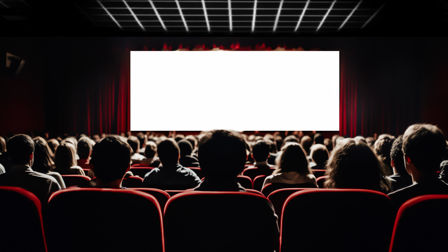Why murals are having their moment
They're arguably the earliest form of advertising but, since our ancestors daubed paint on cave walls, murals have grown in both size and popularity. Here, Hugh Todd, a creative director and the co-host of the Behind the Billboard podcast, explains his love for the large-scale art form and examines their resurgence.
Have you ever had a mural moment? Walking down the street, minding your own business when, all of a sudden, your eyeballs are assaulted by an enormous, hand-painted wall so beautiful it stops you in your tracks.
You probably mutter something like 'fuck me, that’s amazing!', before whacking it up on Instagram.
Vast, magnificent and so cool it would be etched on my brain forever.
My moment came in the early 90s on a visit to New York. Turning from Houston Street onto Broadway I spotted it. Vast, magnificent and so cool it would be etched on my brain forever: the DKNY mural. Each gigantic sans serif letter (based on a logo by Peter Arnell) designed as a window onto the Big Apple, the island of Manhattan revealing itself across the insides of four skyscraper letters like some futuristic dreamscape.

Above: DKNY's mural in New York was Hugh Todd's 'mural moment'.
It felt less like a brand selling me something and more like an artist making me feel something. Murals do this. They’re unlike any other medium. Their impact is unavoidable and they’re becoming more and more popular with brands who want big messages on big walls.
In the early 1500’s Michelangelo painted possibly the greatest mural ever created on the ceiling of the Sistine Chapel.
So, what’s behind this resurgence of murals? Or, rather, did they ever go away? “It’s an exciting time," says Lee Bofkin, CEO and Co-Founder of Global Street Art, the agency behind mural campaigns for Specsavers, VW, Peaky Blinders and Oatly. "We've seen growth over the years in the UK and internationally but, with that growth, we have seen new entrants into the industry. That said, we've also seen a lot of companies exit and pivot away. Painting murals comes with large operational and other challenges - companies that don’t get into it with passion often drop out.”
Murals aren’t new. Donna Karen didn’t start if off, although if you’d told me she did back then I’d have believed you. You could argue the early scribblings on cave walls were the originals. And you can definitely say that in the early 1500’s Michelangelo painted possibly the greatest mural ever created on the ceiling of the Sistine Chapel, using the pounce technique, which is still in use today, proving not that much has changed in the intervening 500 years.
Above: Oatly has embraced murals for his advertising campaigns.
Murals were traditionally intended to beautify public and private spaces before becoming a canvas for social and political commentary, commemorating important figures or historical events. Jesus, George Floyd, Jurgen Klopp, Maradona, the Troubles, Mosley’s Black Shirts, the Jackson5... all these and more have all had their moment on bricks and mortar.
I guess we’re generally just more attracted to stuff that feels more home-made, more human.
One current brand synonymous with the mural is Oatly. Walk around Shoreditch or Brighton, or any number of cool European cities, and you will see their kooky, off the wall (on the wall) work. The ironic tone of voice and DIY art direction are signatures of the brand.
“We don’t typically seek out murals, but if they happen to exist in the OOH landscape we’re targeting, it’s like finding an oyster amongst all the mollusks (if mollusks don’t taste as good as oysters)," says Michael Lee, CD of Oatley’s Department of Mind Control. "I guess we’re generally just more attracted to stuff that feels more home-made, more human.”
Above: Some TV shows have embraced murals, as have luxury brands. They are also fertile ground for political statements.
Who else does it well? 4creative’s mural for TV show Derry Girls, in 2019, was iconic as soon as it went up and is probably even more so now, featuring in endless ‘Best things to see in Derry’ blogs. Similarly, the BBC had great success for Peaky Blinders, reproducing fan art of Tommy, Polly, Arthur et al on walls up and down the country for the fifth series. Beats, Brew Dog, Dominoes, North Face x Gucci and Tourism Ireland also deserve honourable mentions for recent work.
As captive platforms go, murals have got to be up there as one of the most effective media.
What’s it like to be up in the air on a cherry picker, with a pot of paint, a brush and maybe a decent podcast (Behind the Billboard, perhaps). Peter Barber is a fine artist and modern mural painter who specialises in spray-painted figures, photo realism and murals. “Quite often when I’m painting," he says, "people literally stand next to - or, rather, under me - and have a chat and film me. It’s quite something. There’s not many media platforms that do that.”
As captive platforms go, murals have got to be up there as one of the most effective media. Rumour has it that dwell times for murals massively beat more traditional OOH billboards. And the success of these enormous etchings is in the hands of one person - the mural artist - often working for three to four days to reproduce the work. You’d think strong arms and huge pots of paint are essential. “There’s very little need for either,” says Barber. “The strongest part of my body is my fore finger as that is what is holding the spray can nozzle, creating the artwork. Apart from that it’s pretty similar to what Michelangelo was doing all those years ago, with pouncing still very much in use”
Above: A selection of other murals from around the world, including possibly the greatest ever mural, by Michelangelo for the Sistine Chapel.
The best murals are simple, graphic executions that tend to be more shareable and look better once compressed onto a small screen. Bofkin cites the match box test, claiming “the best murals should work [as perfectly] on a three-inch match box cover as they do on a 200 ft wall”. This seems to tally with other rules of thumb from the great and good of art direction. Ad legend Paul Arden's motto was you should always know a brand (on a poster) from a distance of 100 feet. While Dave Dye recently mused on LinkedIn that the very best OOH should also work as a thumbnail. All singing from the same, simple song sheet, then.
The best murals are simple, graphic executions that tend to be more shareable and look better once compressed onto a small screen.
So, what next? Another 500 years of the same? Bofkin sees a positive future for murals: “The hand-painted advertising side will continue to grow. It's a fun space to play in [and] it means the industry will continue to generate more punch than its modest size suggests; the product is great [and] we're moving into an environment where we demand more colour and life in many more of our public spaces.”
Above: Artist Peter Barber at work, and his recent mural for Valentino.
Murals are emotional, hand-crafted images that endear themselves to the viewer, lending a feeling of community, even when the brand behind the image is anything but local.
Murals are emotional, hand-crafted images that endear themselves to the viewer.
Peter Barber shares the emotive nature of painting: “I feel trusted to do a good job. One of my favourite recent pieces was for Valentino through GSA. Just an incredibly beautiful image. One of my favourites ever. Painting such an image I feel I am bringing to life all the work of so many creative people; the photographer, the art director, the model, the client... they’ve all contributed their time and energy and, in this case, it’s all part of a £4m campaign, so my spray nozzle needs to be strong and steady. It’s a privilege to bring these images to life.”
And it’s a privilege to see them from down here on the pavement too, where, no doubt, many others will be having their mural moment soon.
)




 + membership
+ membership






















